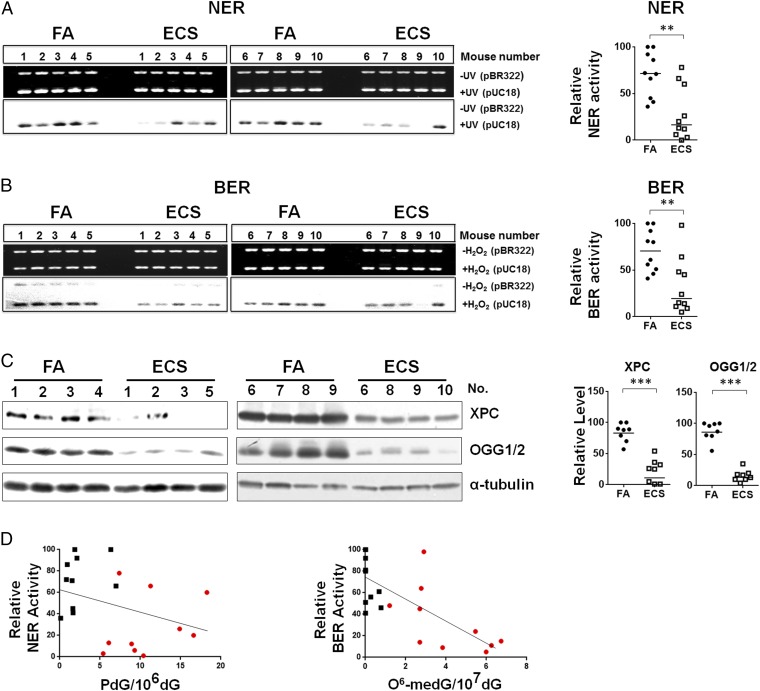Fig. 3.
ECS reduces DNA-repair activity and XPC and OGG1/2 in the lung. Cell lysates were isolated from lung tissues of mice exposed to FA (n = 10) or to ECS (n = 10) the same as in Fig. 1. The NER and the BER activity in the cell lysates were determined by the in vitro DNA damage-dependent repair synthesis assay as described (13, 28). (A and B) Ethidium bromide-stained gels (Upper) and autoradiograms (Lower) are shown in Left. In Right, the radioactive counts in the autoradiograms were normalized to input DNA. The relative repair activity was calculated using the highest band as 100%. (C) Detection of XPC and OGG1/2 protein in lung tissues (n = 8) by Western blot (Left). Right graphs are quantifications of ECS effect on the abundance of XPC and OGG1/2. The bar represents the mean value. (D) The relationship between the level of PdG and O6-medG adduct and the NER and BER activity in lung tissues of FA- (black square) and ECS (red dot)-exposed mice.

